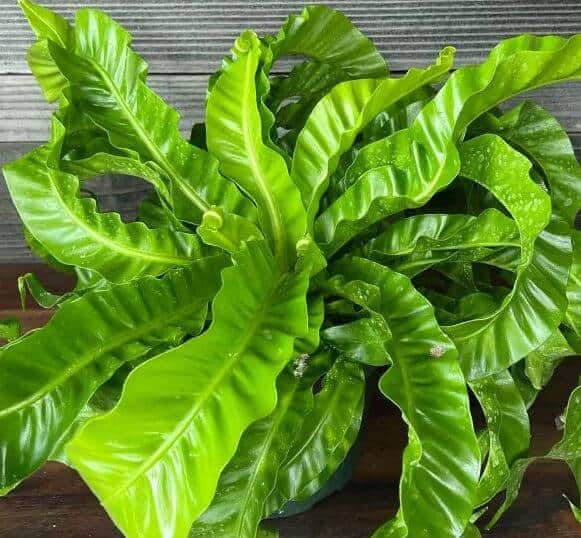Last Updated on January 6, 2023 by a Friendly Gardener
A houseplant favorite, the hurricane fern plant is beloved for its gorgeous, whirling fronds.
A native of Southeast Asian countries such as Korea, Japan, China, and Taiwan, where it inhabits dark forests, tree trunks, and cliff faces, the hurricane fern plant is available in nurseries across Europe and United States, cultivated as ornamental plants that are ideal for terrariums and greenhouses.
These natural epiphytes are beautiful, easy-to-care-for plants, which makes them a no-brainer addition to any garden, indoor or outdoor.
Bringing home a hurricane fern plant? Here’s an introduction to this lovely plant and a 101 on hurricane fern plant care.
About the Hurricane Fern Plant
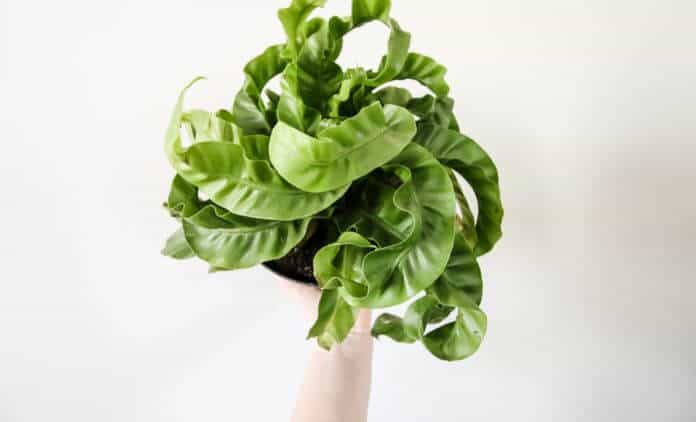
Hurricane fern plants are scientifically named Asplenium antiquum, belonging to the bird’s-nest group of ferns.
These evergreen ferns, also known as bird’s nest ferns (which is also the generic name used to refer to all ferns in the Aspleniaceae family), Asplenium hurricane, twisted bird’s nest fern, Asplenium antiquum hurricane, hurricane bird’s nest, or simply nest fern, is known for its beautifully arching bright-green fronds.
Often, the Asplenium antiquum is confused with the Asplenium nidus, with the two names used interchangeably. However, the former can be differentiated from its close cousin by its uniformly wide fronds.
These perennial plants are slow growers, doing well when planted in the spring outside their hardiness zones (9 and 10); they can be planted year-round in their zones.
Physical Appearance
In their native rainforest/subtropical environments, these epiphytes can be commonly found growing on external surfaces, such as tree trunks, rocks, and plant surfaces. It’s important to note that epiphytes are not parasites; they merely use the external surface as an anchor and not a food source.
In garden setups, hurricane fern plants do well in containers, sporting spoon-shaped, uniformly wide, erect, green fronds that emerge from a central clump or rosette. The fronds all feature strong midribs.
In the wild, these fronds can reach lengths of five feet, but when cultivated, these fronds typically measure around two feet. The plant can expand to a width of around three feet.
Hurricane Fern Plant Care
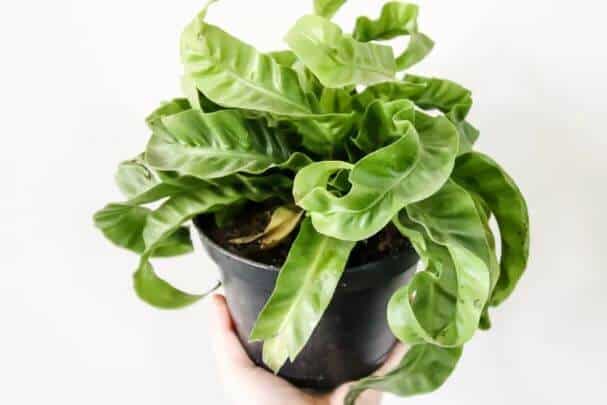
Ample humidity, warmth, and moisture are the three key players contributing to a healthy hurricane fern plant. Here’s how to give your plant all of this and more!
Watering
Hurricane fern plants like water, but not excessive amounts of it as this can lead to overwatering, waterlogging, and root rot.
Only water these plants when the top couple of inches of the soil feels dry to the touch. Ensure that the pot has sufficient drainage holes if grown in containers, for excess water to exit.
Take extra care not to allow water to accumulate in the center of the frond clump, as this can quickly lead to rot and mold growth. You can avoid this by pouring water around the plant, without wetting its fronds, directly into the soil, as opposed to pouring it on the plant or into its crown.
You can thoroughly water the plant during its growing season (spring and summer) but cut back on the watering in the winter months. During the winter, it’s sufficient to just moisten the soil, instead of soaking it or making it soggy.
Yellowing leaves are a sign of overwatering, whereas dry, wilting leaves are a sign of underwatering.
Light
Hurricane fern plants need indirect, filtered light, with moderate shade if placed outdoors. Indoors, an east or north-facing window with a curtain or drape to filter bright sunlight is perfect.
Outdoors, ensure that the plant has sufficient shade from direct sunlight, as such bright light could cause yellowing or scorch the leaves. Any intensity of light other than extremely early morning sunshine is too much for your plant to handle. Similarly, insufficient light will stunt growth, so ensure that the spot or corner isn’t too dark.
Pro tip—regularly rotating your hurricane fern will help all parts of the plant receive the benefits of sunshine and grow better!
Temperature and Humidity
Hurricane plants thrive in warm conditions where the temperature consistently sits between 60℉ and 80℉—this is the average household temperature, in any case.
These plants can withstand occasional exposure to temperatures as low as 50℉, but anything lower can significantly harm them and cause the fronds to develop brown tips, especially if the exposure is prolonged.
For the same reason, keep your plant away from air-conditioning vents and drafts when you grow them indoors.
If your hurricane fern is being raised as an outdoor plant, move it indoors during the winter months or use other measures, such as rocks and cotton sheets, to protect it from the cold and frost.
When it comes to humidity, hurricane fern plants love moist environments. To meet this need, you can place the fern in steamy rooms, such as kitchens and bathrooms, or regularly mist the leaves as a supplement to the existing humidity. Terrariums and greenhouses are also great options.
You could also group plants, use pebble trays, or if your interest and budget allow it, invest in a humidifier to increase the humidity around your plant.
Whatever method you choose, ensure that your plant is receiving sufficient humidity, as hurricane ferns hate dry, hot conditions.
Soil and Fertilizer
Well-draining, loose, loamy soil that’s enriched with organic matter is ideal for hurricane ferns. For container plants, peat-based potting mixes are a great option.
Hurricane ferns don’t generally require fertilizer, but a balanced liquid fertilizer, diluted to half strength and applied once a month in the growing season (between April and September) won’t hurt the plant.
Take care not to bring the fronds in contact with the fertilizer or to use excessive amounts, as this can cause burns. Brownish-yellow fronds and an abnormal shape are signs of excessive usage of fertilizer.
Repotting
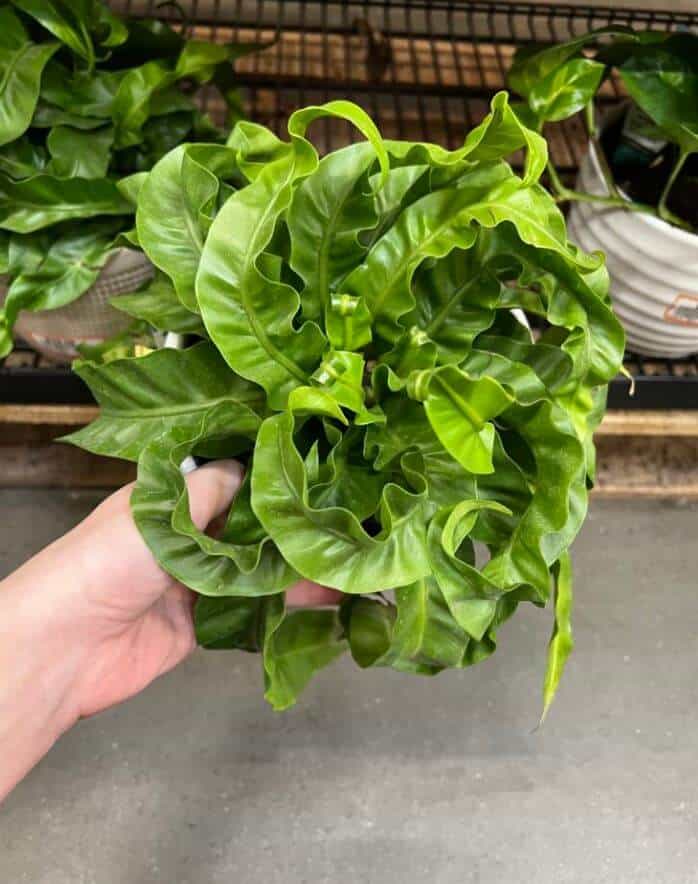
Hurricane fern plants, as epiphytes, aren’t prone to getting root-bound due to small root systems but they can get top-heavy. Repotting may be necessary when the foliage on top grows much wider than the pot’s base, leading it to topple over.
This typically happens every couple of years. Use a heavy base, such as a clay pot, to enable sufficient anchorage.
Propagation
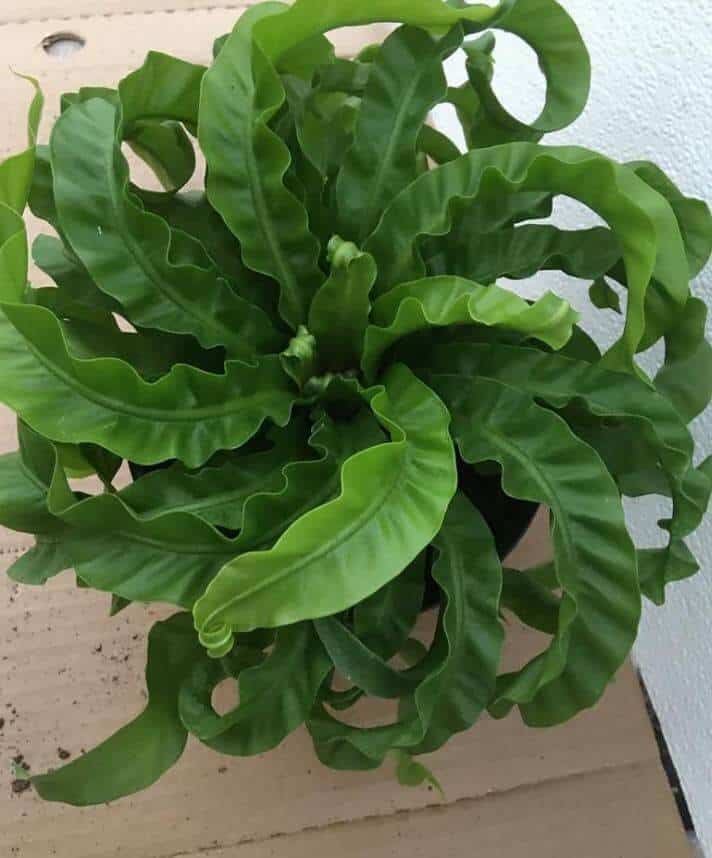
Propagating a hurricane fern plant can be hard for new gardeners. A nursery-bought plant is a much easier option. If you want to try propagating the plant on your own, you can do so using its spores.
The Final Word
Luckily, hurricane ferns are not given to any pests or diseases other than common household pests, which only increases their appeal.
Remember, during the growing season, the older leaves will brown and drop off—this isn’t any cause for concern. However, make sure that you don’t disturb the fresh fronds rising from the rosette, as these are extremely delicate and could get deformed or damaged if disturbed.
Overall, if you’re looking for a beautiful plant that’s beginner-friendly, a hurricane fern plant is a superb idea.

